
Our journey began at the end of January just before opening day to secure BWCA permits for the upcoming season. My husband and I sat on the floor poring over our collection of maps; occasionally running mileage estimates on Paddle Planner.
We talked about our goals for the trip and agreed that we both wanted to slow it down and do a more leisurely trip after last year’s crazy adventure due to wildfires. After we finalized time off from work, we unanimously agreed on an 80-mile journey through the heart of the BWCA.
Over the next seven months, we planned our trip. We estimated mileage and planned our meals. We looked at lakes and campsites we might want to stay. We took notes from the DNRs LakeFinder Website. We tested our gear and prepared our food. When it came time to pack for our BWCA journey, we followed our packing list and then double and triple-checked to make sure we had everything. After a few planning and packing mishaps on our trip to Rose Lake earlier this year, we made sure this 12-day trip was impeccably planned.
As anyone who’s visited the Boundary Waters Canoe Area Wilderness knows, no matter how impeccably your BWCA journey was planned, not everything will go as expected. The outfitter may unexpectedly change their hours, putting you hours behind your planned launch time. You may experience days of rain, wind, and frigid overnight temps. You could encounter busy portages and have difficulty finding a campsite. No matter how well you planned, you don’t know what you’ll encounter. And more often than not, that’s part of the fun and adventure.
“Embrace the unexpected” became the theme of this trip days before we began packing our gear. And now that this long-anticipated BWCA journey has come to an end, I can tell you that I wouldn’t have had it any other way.
This is our story about an unforgettable 12-day journey through the heart of the BWCA. As you read this, keep in mind that the wilderness has a place for everyone. We all have different skills, abilities, and goals for our wilderness trips. However you like to experience the Boundary Waters, I hope our journey will offer you a spark of inspiration and some new ideas and insights.
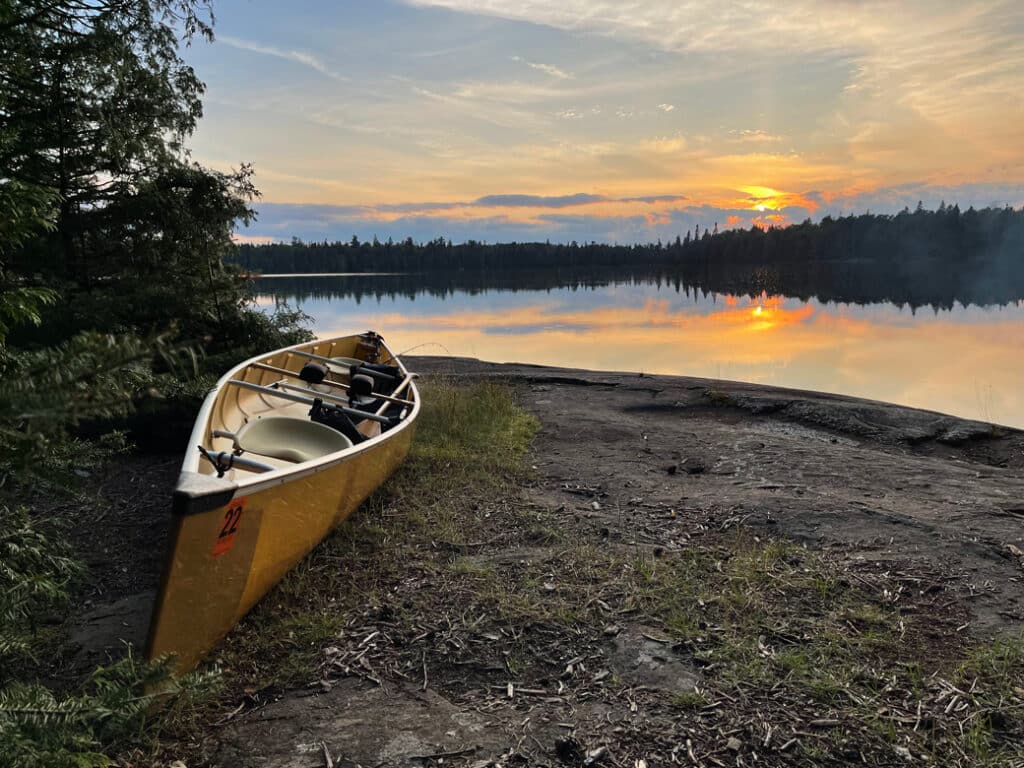
Hello Hazel
“What kind of fish did LakeFinder say are in here?” Jer asked. “Pike and perch,” I responded. “Well, I just caught a keeper walleye,” he said. “From shore?” I asked. “Yeah,” he responded. “Right off the front of our site.”
We had settled in for the first night of our 12-day BWCA journey on Hazel Lake after launching from Entry Point 38, at Sawbill Lake. Over the course of the day, we traveled 13 miles over nine portages, seven lakes, and the fabulous Phoebe River. With heavy packs, bulging with 12 days worth of provisions, a long portage from Beth to Grace, and the adventure that comes with river travel, we were exhausted and would have been happy to call any site home.
We didn’t expect much from this campsite. It was described to us as a “pass-through lake,” meaning people just stay there on their way to someplace better. But looking back, we would have loved to have spent another night on Hazel. We had the lake to ourselves, watched a stunning sunset, and caught walleye from shore. It was a perfect start to our unforgettable 12-day journey through the heart of the BWCA.

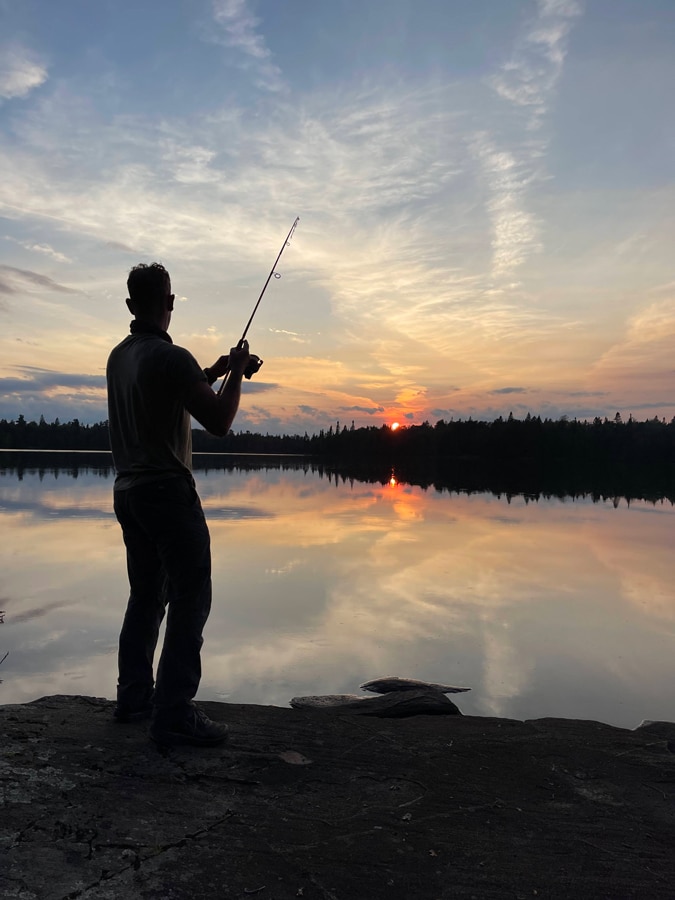

Fabulous Phoebe
The surface of hazel was filled with fog when we rose long before the sun the next morning. We had another long day of travel and were eager to get started. A short paddle across Hazel and we were back on the Phoebe River.
“I just love these small BWCA rivers,” I said to Jer. “They’re so peaceful and beautiful. And from the look of these portages, this route is lightly used. It’s just kind of a pain to constantly get in and out of the boat,” I said. “It really slows you down.”
“Really?” he asked. “That’s what I like about it. The adventure and challenge.”
I’m grateful to have that attitude and sense of adventure on our team.
Our peace and solitude ended as we paddled through the north end of Polly. It was late morning and the lake was “packed” with canoes fishing and passing through. We were surprised to find that Koma was also busy as we made our way to Malberg, hoping to find a nice site to rest for a couple of nights. As we paddled up the south arm of Malberg I was shocked to see every site occupied so early in the day.
We spent close to two hours paddling around looking for a serviceable campsite. When we discussed it later in the trip, we both wished that we’d moved along to the next lake. We eventually settled down in what was our worst campsite of the entire trip. It rained for several hours the next morning so we decided to stay put and rest up for the next big adventure.

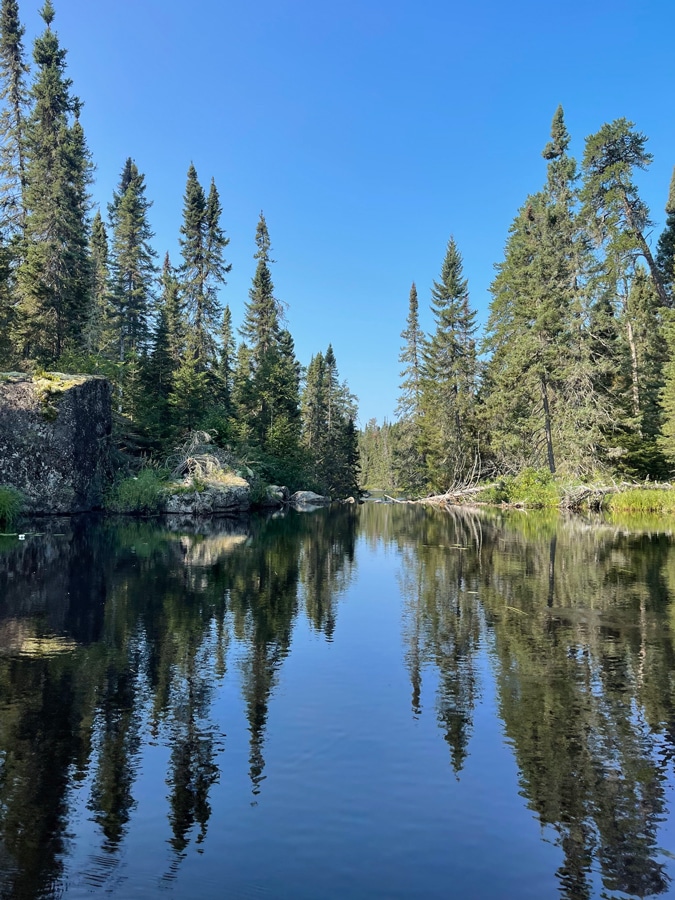

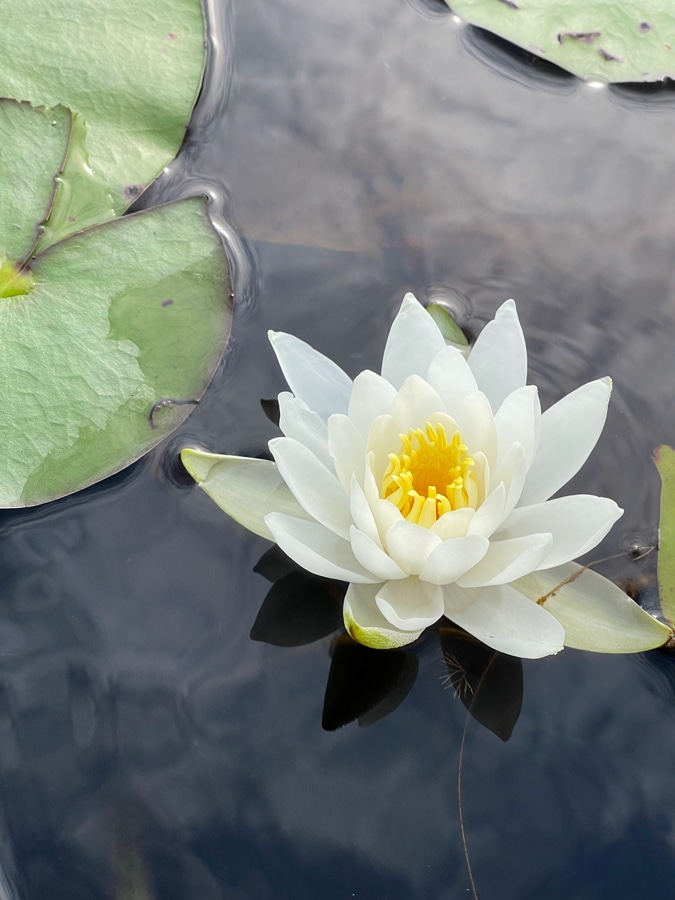
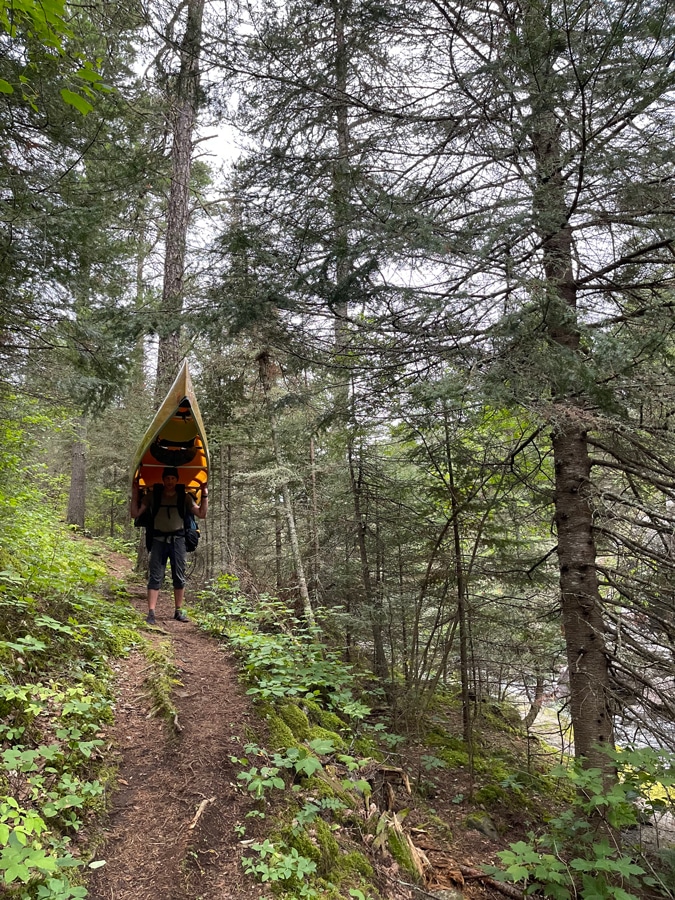

Day four of our 12-day BWCA journey
After two nights at a not-so-great campsite, bad weather, and difficult fishing, we were eager to continue our BWCA journey. Things turned around after our first portage out of Malberg into the Kawishiwi/River Lake. “Oh my goodness. It’s so beautiful,” I repeated to myself as I lugged my 60-pound pack down the slippery portage. When I got to the end, I tucked my pack into the bushes and waited for Jer to make his way down with the canoe and the other pack. As soon as he was within earshot he asked, “Do you see this? It’s incredible.” The portage ended in a small breathtaking canyon that we took a few minutes to stop and enjoy, taking plenty of pictures, and commenting fanatically on its beauty.
We continued our journey through the heart of the BWCA, with frequent conversations about the unspoiled natural beauty that surrounded us. We traveled 11 miles over 10 portages and nine lakes that day; only encountering two other parties and a handful of leeches.
As we made our way onto Little Saganaga, the wind picked up and it started to drizzle. We decided that Little Sag would be our home for the night. The first campsite we paddled to was open and a huge step up from Malberg so we decided to stay.
You really don’t know what an area of the Boundary Waters is like until you experience it firsthand. And our first impressions of Little Sag far exceeded our expectations. Up until this trip, we both would have said we don’t love big lakes. But Little Sag has redeemed them all. The lake is breathtaking, every campsite we saw was wonderful, and there was very little traffic. We will definitely return to this beauty on a future trip.
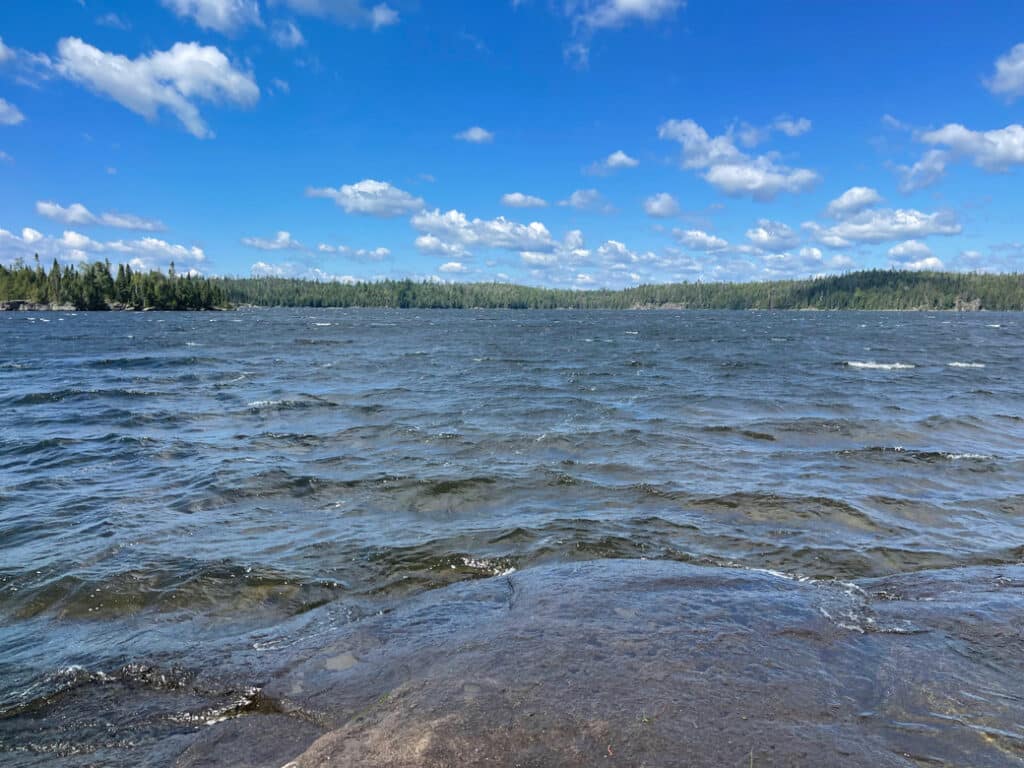
Big water and wind
Day five brought more rain and big winds. We actually got up in the middle of the night to put our tarp and cookware in the pack to ensure they would still be there when we got up in a few hours. Between storms, we snuck out on the water that morning for an unsuccessful attempt at fishing. After losing my prized Little Cleo, we pulled into another 5-star campsite to reset and take a swim. As soon as we made our way back for lunch it started to rain and continued until just before we turned into the tent for the night.
Our nightly check-in with the weather radio predicted clear skies for the coming days. And with the clear skies came several days of 15 to 25-mile-per-hour sustained winds. Other than Little Sag, the next day’s route was primarily small lakes so we gave it a go. We white-knuckled our way down the lake, staying close to shore, and taking breaks behind the countless rocky islands. Needless to say, we were relieved to arrive at what was another unexpectedly beautiful portage.
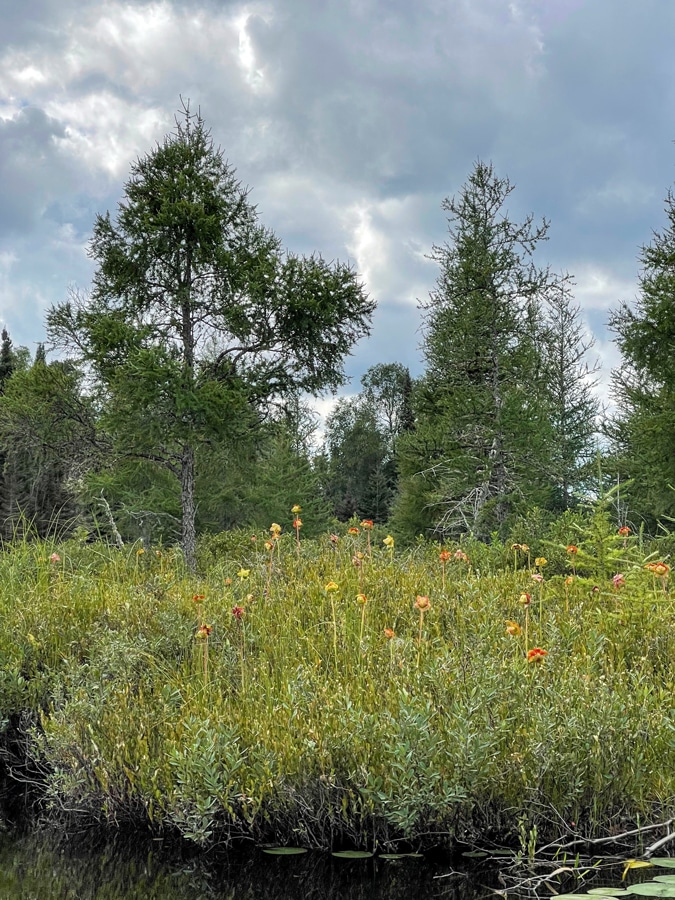


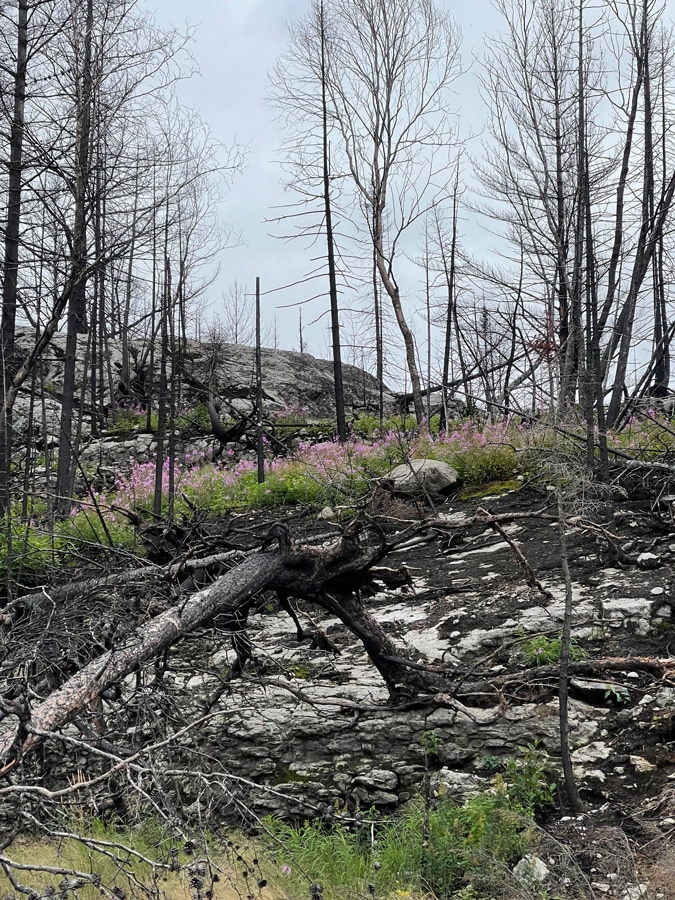
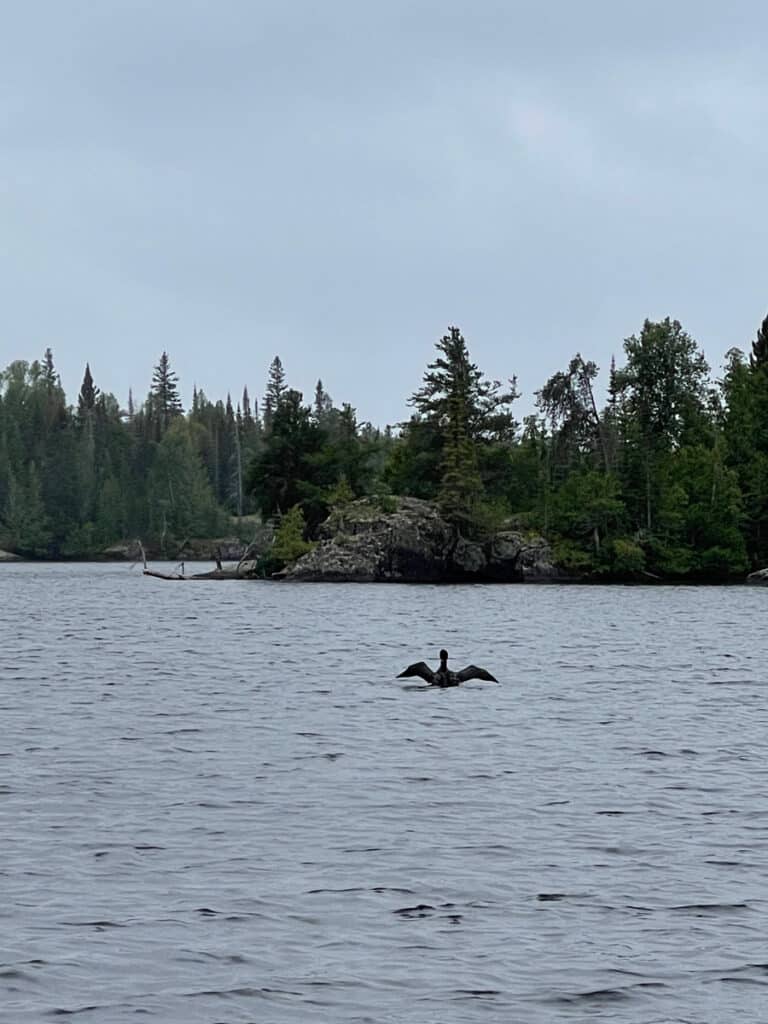
We saw a pair of loons with a little one in tow on the next three lakes and slowed our roll to take in the magic of nature. We were making good time and commented on how easy all of the portage landings had been on this trip. As we pulled up to the landing from Tarry to Crooked, I said, “Finally, some slimy boulders to balance on while unloading the canoe. Now I feel like I’m on a real BWCA journey.”
The portage from Tarry to Crooked was no joke. Boulder-strewn, overgrown, lots of elevation, and big wind gusts; it was only 40 rods, but a tie for the worst portage of the trip.
As we made our way onto the 805-acre Tuscarora, we knew that was as far as we’d make it that day. We made our way through the wind-whipped lake with our eyes on the waves. We approached the island campsite, but the crashing waves made for a difficult landing, so we continued to the next open campsite. Tuscarora turned out to be another beautiful lake with exceptional campsites and more quiet and solitude.
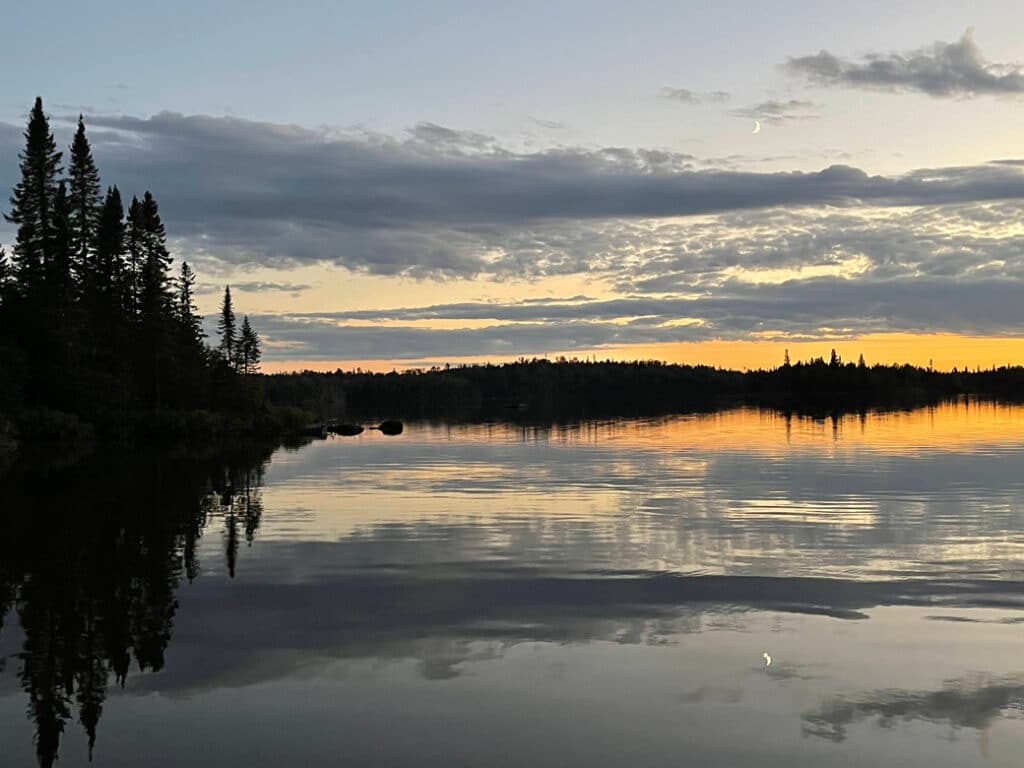
People and problematic portages
Wild winds and hot and humid weather offered us a lovely layover on Tuscarora. We swam, caught some pike, and watched the snakes that traveled through our fire grate each afternoon. It was a nice rest and we were ready to tackle some miles by day nine.
As we made our way onto Copper it began to thunder. And when we pulled up to the portage to snipe, the lightning followed. We made our way to what we thought was the end of the portage and counted the seconds between the thunder and lightning to gauge its distance. We studied the maps while the storm passed and determined that the beaver dam at the end of Copper had flooded the portage landing. When the storm passed we loaded up the canoe and headed in the direction of the portage landing, as shown on two different maps. We paddled our way to another beaver dam and followed what appeared to be a well-traveled portage around it. When we were back on the water I told Jer, “This doesn’t feel right. I think we should turn back.” He agreed and we turned around, crossing the beaver dam once again.
We searched for the portage landing with no luck and as we pulled into the same spot where we’d just waited out a storm, I asked, “Is that it?” Jer hopped out of the canoe to investigate. He came back and reported that it was the portage and was going to be a challenge. We loaded up again and shortly down the portage we discovered the original portage landing that beaver activity had made inaccessible. We were irritated that we lost an hour messing around. But we found humor in this unexpected adventure, knowing we were in good company with other paddlers who had made the same mistake.
As we approached the portage from Snipe to Cross Bay Lake, we encountered the first party we spoke to since the day we traveled to Little Sag. It was a Friday and we crossed paths with many more parties that day. After we made our way out of Long Island Lake, we passed a group heading north who asked if the last site on Long Island was open. We confirmed that it was. They told us they came from Cherokee and that all of the campsites were taken. From what I saw on Cherokee a couple of days later, I question whether this was true. But after this report and seeing the first site on Gordon occupied, we decided to take a side trip to Frost Lake.
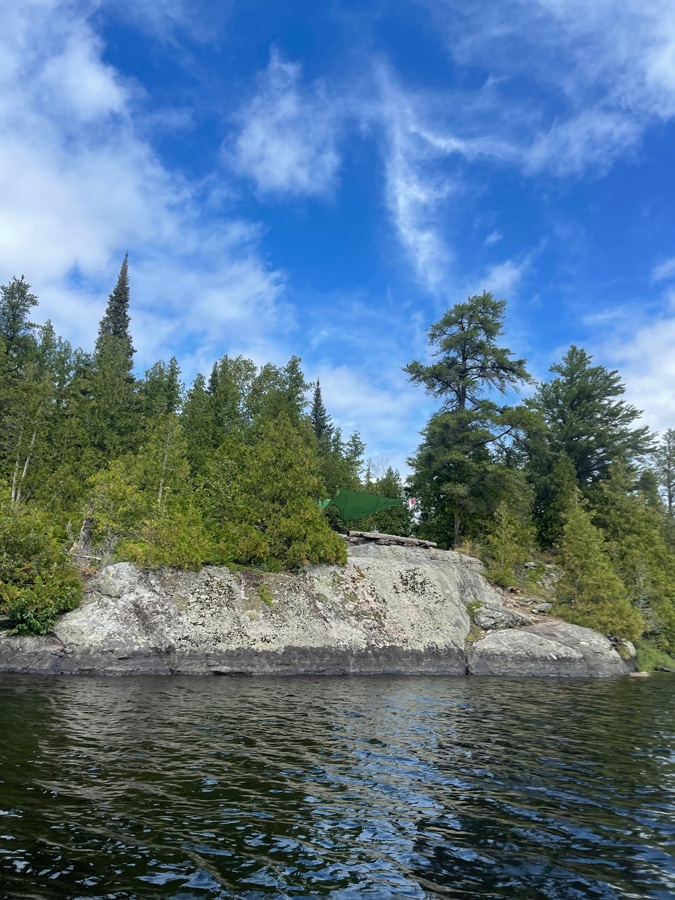
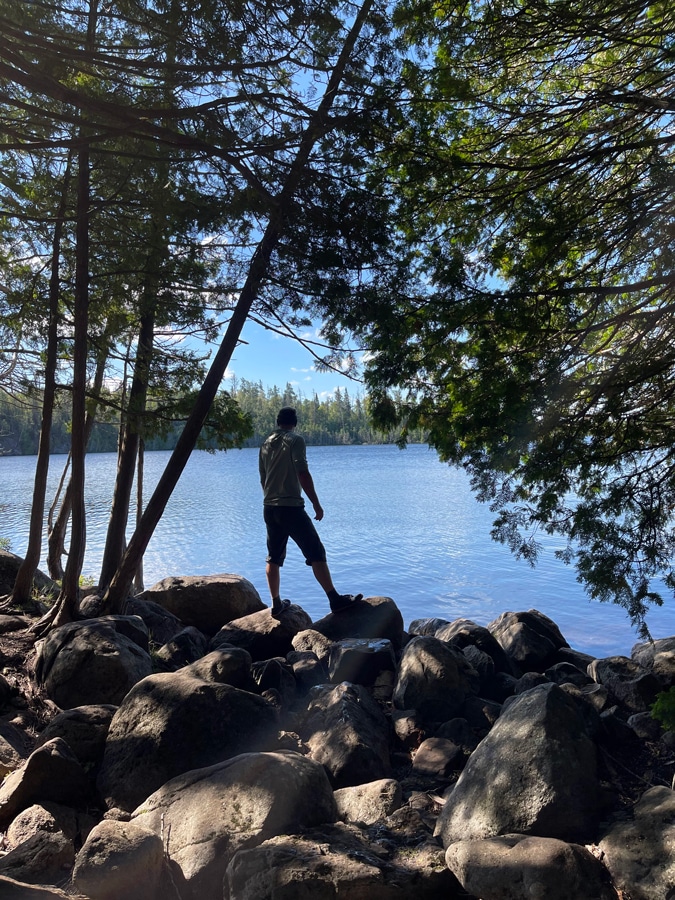
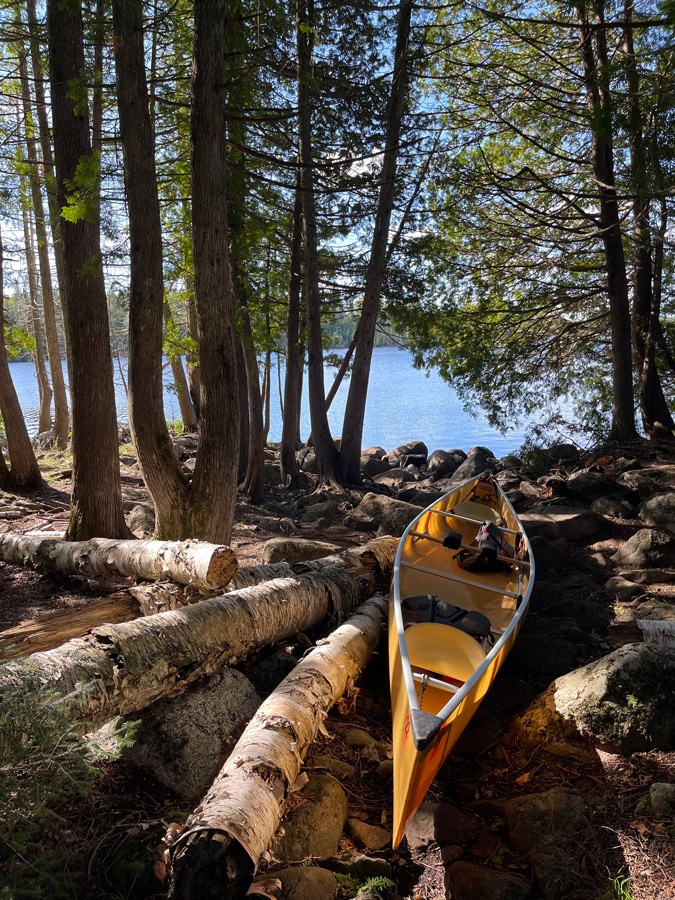


An unforgettable end to our BWCA journey
After a long and muddy portage, we walked through the most beautiful grove of giant cedars I have ever seen. We made our way across Unload Lake with a bit more portage confusion into Frost. We paddled to the first campsite we were targeting and it was occupied. We continued to the next, which was open, and we got to work setting up camp. After some fishing and exploring the following day, we confirmed that we scored the best site. Frost Lake is not the place to find an abundance of exceptional campsites. But the quiet and solitude make up for anything they lack.
The next day the party who occupied that first campsite had moved on. It was an unexpected delight to have an entire lake to ourselves on a Saturday. We spent the morning fishing and I caught my first lake trout which was the first major highlight of the last leg of this BWCA journey.
Not knowing how long it would take to make our way out of the Boundary Waters, we decided to spend our last night on Sawbill. Once again we were up before the sun, paddling our way across Frost Lake, which was covered in fog. We made great time to Sawbill but started to feel anxious after an hour of paddling and no open campsites. We decided to make our way to the western arm that connects to the Kelso River, thinking that would give us the most options. As our good luck would have it, the campsite on the tip of the arm was open and from what I could tell, it’s one of the nicer sites on the lake.
That last night brought frigid temperatures and the aurora borealis. We got word earlier that day that we’d slept through an epic show the night before. This is the norm for us early risers, so we made an effort to stay up later that night, which is harder than it sounds. We were rewarded with the celestial phenomenon STEVE (Strong Thermal Emission Velocity Enhancement) and all of our goals for this Boundary Waters trip were officially met. I can’t think of a more unforgettable way to end a 12-day journey through the heart of the BWCA.
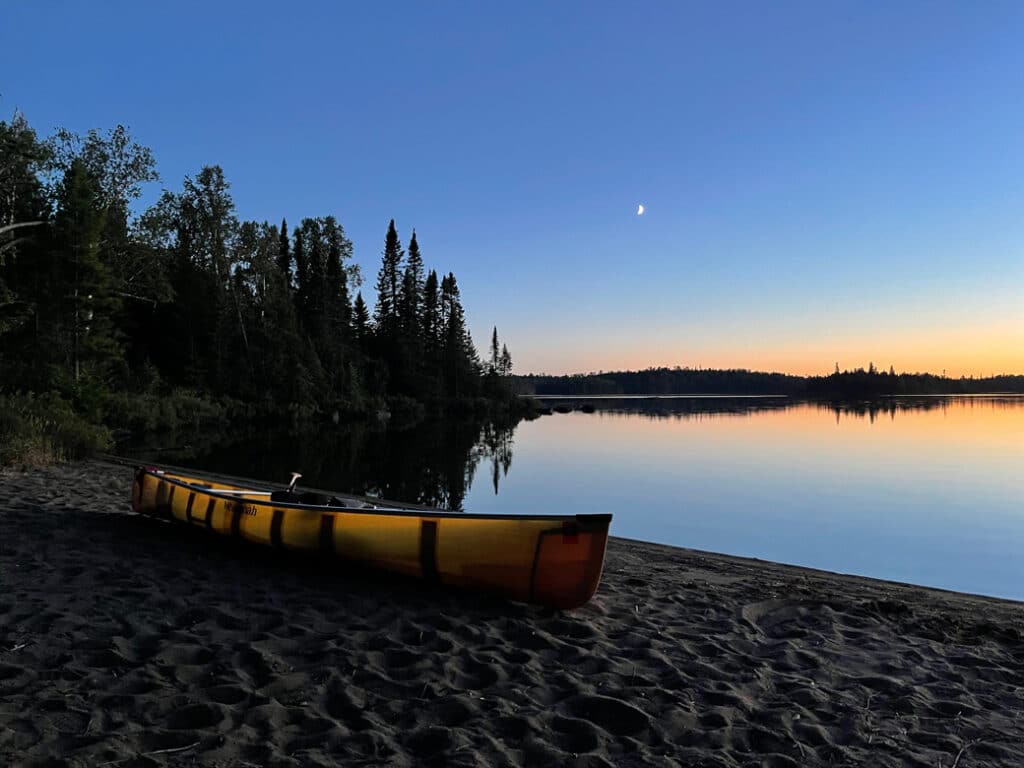
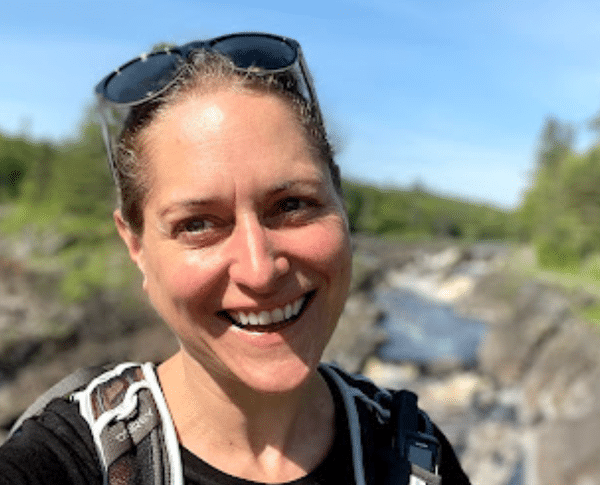
Holly Scherer is a Minnesota-based writer, photographer, outdoorswoman, and guide. She’s most at home in the great outdoors; camping, hiking, paddling, cycling, and gardening. When she’s not on an adventure, she and her husband live in the Twin Cities where they’re fond of saying, “home is where we store our outdoor gear.”

